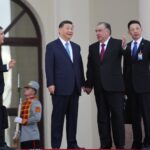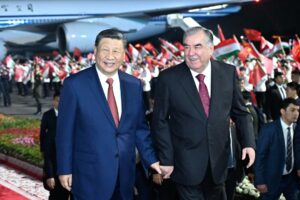In the 1970s and early 1980s there was an amazing rapprochement between Mexico and Bulgaria that was probably unique of its kind. The Central American and Southeastern European countries continued to expand their cultural, political and – to a limited extent – their economic ties. This political rapprochement occurred in a complicated network of global system confrontation in the northern hemisphere, the free swimming of the non-aligned from the influence of the great and colonial powers and upheavals in the international political economy.
Mexico established diplomatic relations with Bulgaria for the first time in 1938. During the 1930s, the southeastern European country had established relations with a number of Latin American countries: Argentina in 1931, Brazil in 1934 and Chile in 1935.
In 1936 the Bulgarian writer Swetoslav Minkov visited Argentina on the occasion of a congress of the writers’ association PEN and then wrote the book “The Other America”, which decisively shaped the early Bulgarian image of Latin America that was emerging at the time.
In 1938, the reformer Lázaro Cárdenas del Río ruled in Mexico and in Bulgaria the authoritarian and arch-conservative Tsar Boris III, who a few years later led his country into an alliance with Nazi Germany. A few days after the United States entered World War II, on December 20, 1941, the Mexican government broke off diplomatic relations with the Axis powers, which also included Bulgaria. After two Mexican oil tankers were sunk by German submarines in the Gulf of Mexico in May 1942, the government in Mexico City also declared war on the fascist Axis powers. As one of two Latin American countries – along with Brazil – the government in Mexico City sent troops to the fronts of World War II: In the years that followed, Mexican bombers were deployed with US troops in the Pacific and in the liberation of the Philippines from Japanese fascists involved. Bulgarian and Mexican troops are unlikely to have met on the battlefields of World War II.
The People’s Republic of Bulgaria joined the United Nations in 1955. Mexico was not an obstacle to the Balkan country’s admission to the UN. For a decade, the Latin American country’s UN delegation had led the opposition to the UN’s admission of fascist Spain, which had maintained close ties with the Axis powers throughout World War II. In the case of Sofia, there was no such negative attitude – the real socialist country after the end of World War II had little in common with the regime from before 1945. In 1955, a number of formerly fascist states such as Italy (then already a NATO member), Romania (then a member of the Warsaw Treaty Organization, WVO) and Albania (at that time also a WVO member) joined.
Despite the joint UN membership of Bulgaria and Mexico from 1955, bilateral relations between the two countries remained at a low level. Representatives of both sides met within the framework of the United Nations, but there were no joint political initiatives or anything like that. At that time, Sofia first put out feelers to other Latin American countries. After the victory of the Cuban Revolution in 1959, Bulgaria and Cuba established diplomatic relations for the first time in 1960. In the years that followed, the largest of the Antilles islands developed into an active member of the real socialist bloc of states. In 1972, Cuba even joined the Council for Mutual Economic Assistance (COMEW), the economic alliance of the socialist states allied with the Soviet Union.
The only Latin American country other than Cuba with which Bulgaria had somewhat closer ties was Argentina. At that time, this country was home to the largest Bulgarian diaspora community in Central and South America. On the other hand, there were initially no active diplomatic relations between Mexico and the Bulgarian People’s Republic. This only changed in 1974. Shortly after official relations were resumed, both countries also opened embassies in the other country.
The relations between the two countries, which previously hardly existed, experienced a massive revaluation within a very short time – small countries like Bulgaria do not have embassies in many countries.
At this time, the most populous Central American country was increasingly moving towards the real socialist bloc politically and economically. Under President Luis Echeverría (in office from 1970 to 1976), who shaped Mexican foreign policy for a long time, the government in Mexico City tried to position the country as a leading power in the Global South. This also included a hitherto unprecedented rapprochement with the real socialist states. In 1975 Mexico received observer status in CMEA. This allowed government representatives to take part in the council meetings of the socialist bloc of states. In the course of this rapprochement, the Mexican government (re-)established diplomatic relations with a number of countries in Eastern Europe and Central Asia,
Bulgaria also had its reasons for rapprochement with Mexico: on Mexican and Venezuelan initiatives, the governments of a number of Latin American countries established the Latin American economic system (Sistema Económico Latinoamericano y del Caribe, Sela) in 1975, which aimed to strengthen the countries of the region to connect more economically. From the beginning, real socialist Cuba also belonged to Sela. Early on, the largest share of financing came from Venezuela, which provided 17 percent of the Sela budget. Regional integration, which also included Cuba, was in the interest of the government in Sofia. From then on, improved relations with Mexico and Venezuela were among the regional priorities of Bulgaria’s Latin America policy.
In order to improve the bilateral relations between the two countries, the Bulgarian government focused primarily on cultural policy. Lyudmila Zhivkova, who headed the Bulgarian State Committee for Arts and Culture (Ministry of Culture) from 1975 to 1981, played a special role in this. The daughter of longtime head of state and leader of the Communist Party Todor Zhivkov first traveled to Mexico in November 1976. The following year, the “Thracian Treasures from Bulgaria” exhibition opened in Mexico City – immediately after it was shown at the prestigious British Museum and even before it was exhibited in the USA. With its cultural policy, the Bulgarian government wanted to show how important the government in Sofia was to Bulgarian-Mexican relations.
In 1978, Mexican President José López Portillo (in office 1976–1982) visited the Bulgarian People’s Republic and, on his instructions, Bulgarian specialists then helped establish an agro-industrial complex and food processing plants in the Mexican state of Guerrero. 2,100 former farmers found new jobs in the factories built by the Bulgarians. Negotiations between the two countries about opening a refinery and petrochemical factories, on the other hand, dragged on for a long time and petered out. Agro-industrial cooperation in Guerrero remained at the heart of economic cooperation between the two countries.
The high point of political and cultural relations was marked in 1981, when celebrations were held to mark the 1,300th anniversary of Bulgarian statehood. The Mexican side had already established an organizing committee three years earlier, which was headed by the Primera Dama Carmen Romano. It was the first committee for these Bulgarian celebrations beyond Bulgaria. In 1981, the National Autonomous University of Mexico, the oldest university in the Americas, hosted a “Bulgarian Culture Week” with film screenings, readings of Bulgarian texts and theater performances. Photo exhibitions also toured Cuautla and Ciudad Sahagún. The exhibition “Bulgarian Medieval Civilization” opened in the National Museum of Anthropology, for which Zhivkova traveled specially. The Bulgarian Minister of Culture also took part in celebrations to mark Bulgaria’s 1,300th anniversary in Puebla, now the fourth largest city in Mexico. 11 There, the municipal authorities renamed the central green space Sofia Park.
Shortly after her return from Mexico, Zhivkova died suddenly and unexpectedly in the summer of 1981 in Sofia. The suspicion that her death was not of natural causes was widespread in Bulgaria for a long time. In September 1981, School 229 in Mexico City was renamed in Zhivkova’s honor and henceforth bore her name (Ludmila Yivkova in Spanish).
The year 1981 marked the climax and the beginning of the end of the Bulgarian-Mexican rapprochement. The global reputation of the Southeast European People’s Republic suffered enormously after it was suspected that the Bulgarian secret service was involved in Mehmet Ali Ağca’s attempted assassination of Pope John Paul II in May 1981. In addition, there were economic problems on the Bulgarian side: the eighth five-year plan implemented at the time did not lead to the intended results. In the early 1980s, the country also narrowly avoided national bankruptcy. With the increasing economic problems, the Bulgarian-Mexican rapprochement fizzled out.
With the end of real socialism, Bulgarian-Mexican relations shrank back to a minimum. The Mexican side closed its embassy in 1989 – the interests of the Latin American country have been represented by the Mexican embassy in the Hungarian capital Budapest since 1994. In addition, since 2003 there has been a Mexican honorary consul in the Bulgarian capital. Bulgaria, which has been part of NATO since 2004 and the European Union since 2007, continues to have a diplomatic mission in Mexico City. There has been a Bulgarian-Mexican friendship group in the Mexican lower house since 2010.
The intensification of Bulgarian-Mexican relations from the mid-1970s to the mid-1980s was a prestigious endeavor for the Sofia government – Bulgarian culture was prominently exhibited in a country as large as Mexico and the President’s wife headed the 1,300 anniversary organizing committee Bulgarian statehood.
Economically, the cooperation offered both countries the opportunity to intensify economic exchange beyond the great powers – a field that was not fully exploited.
To this day there are few traces of the former Bulgarian-Mexican rapprochement in Mexico. School 229 in the south of the capital still bears the name of Lyudmila Zhivkova. In the city center of Pueblo there is a hotel that bears the name of the Bulgarian capital: Sofia.
Source: amerika21















